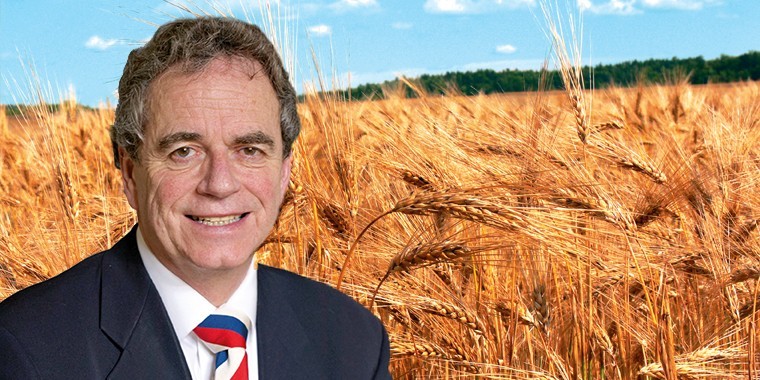Although we are generally at five year lows on grain prices, with some further contract lows hit on Liffe wheat last week, the November futures are only actually 60 pence per tonne down net since 1 August.
Well, that’s this month’s good news out of the way! Two weeks of catchy wet weather in the middle of August has turned the harvest into a protracted affair for some, but in the south about 85% has been completed. True, that means there is a lot of wet corn in the barns, but that’s better then being in the field.
Quality seems to have held up very well, but it will take some time now to condition, analyse and present the wheat crop to the market. Meantime, we have been getting on making export sales to start to liquidate the huge surplus of low protein groups one and two milling wheat that we have.
If you forget the current feed base price, the premiums of £10 to £15 for these have been good, with proper full spec making £30 over. We have even been exporting our milling wheat to France to blend with their weather affected crop: that really is coal to Newcastle! So, as we hoped, even with lower protein, the rest of our milling quality is good enough to take care of itself so far.
But the real elephant in the room is feed wheat. No one yet knows the extent of the UK exportable surplus: estimates vary from 2.5 to 3.5 million tonnes. We, like everybody else, will be checking it all carefully to extract as much quality as possible. But global feed wheat buyers are spoilt for choice as France has to dispose of its newly acquired extra surplus, courtesy of failing milling wheat, plus all the usual Black Sea cheap sellers. It is reckoned that only 20% of UK wheat was sold forward before harvest.
{pull-quote}
Grain groups I am involved with have sold quite a lot more than that, but that still leaves a lot to come to the market. Farmers are not rushing to sell feed wheat: in fact no one in the trade wants to have to sell feed wheat either. At £107 spot ex farm, you would like to think feed wheat could not go any lower. But the reality is, if we have to compete with other origins and export it now, it would have to fall another £5 to calculate! So we won’t dwell on that.
In terms of purely price movement, oilseed rape is the best performer. Since its low point of about £210 ex farm at harvest, it has recovered to £240 in the autumn. This looks like good news in disguise. Well if it is, its a very good disguise. But we must be grateful for small mercies.
As evidence of the economic recovery being not that great filtered through, the pound struggled back over 80 pence exchange rate to the euro. Oilseed rape and all of our potential exports really do need sterling to weaken further and stay over 80 pence. Alas, whatever bad economic news the UK produces, the European Union can be relied upon to trump it with even worse news to keep the euro falling headlong down the pan, in front of the pound.
Despite Russians and Ukrainians killing each other with regularity, grain exports from those countries have been unaffected. Furthermore, the Russian import ban upon goods from the EU, United States, Canada, Australia, et al does not extend to grain or grain products. The Russians certainly know how to get their priorities right.
So, apart from drying and conditioning, I would suggest you concentrate upon selling your quality wheat when you know what you have, and malting barley – because there is no shortage of that – and even oilseed rape. If you do that for the next few months it should provide cash flow and free up storage while putting off the feed wheat issue for a better day. Two months ago I said: “You must hope that your yields are as big as the crop suggests, compensating for the low prices.” Unfortunately for feed grain that may be the only salvation.




